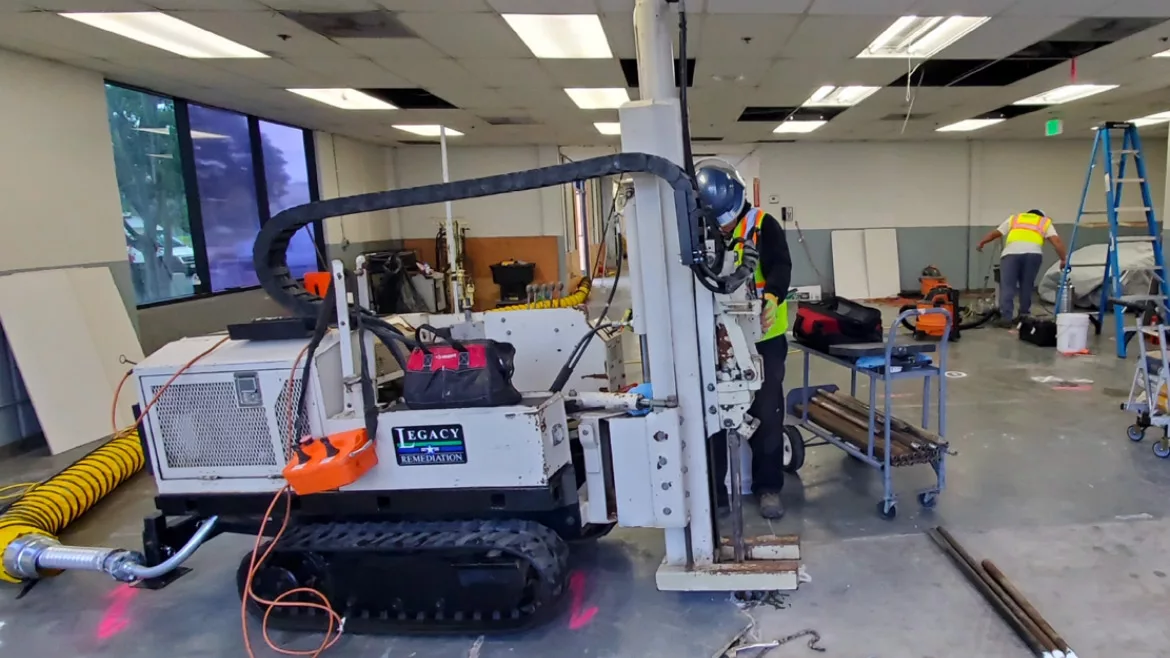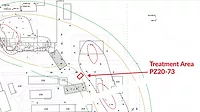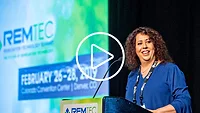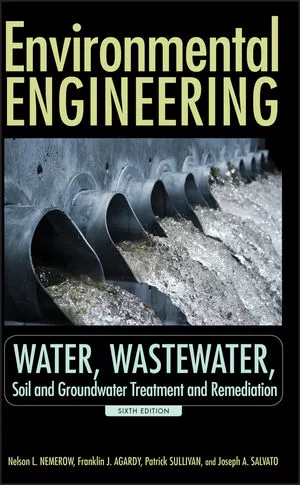Combined remedy rapidly achieves targets to address chlorinated solvent impacts
Remedy quickly reduces CVOC concentration below targets, priming site for future closure

Background and Site Characterization
Active Industrial Facility in Southern California Impacted by PCE and TCE
Chlorinated solvent usage at a former printing facility in Orange County, California (Figure 1) contaminated the soil, soil vapor, and groundwater with tetrachloroethene (PCE) and trichloroethene (TCE), requiring remediation. Much of the contamination (i.e., the source area) was identified beneath the site building of an active business. Soil vapor sampling completed at the site indicated a vapor intrusion risk due to the contaminant release.
The property owner responded proactively following the discovery, reaching a settlement with the site tenant, and negotiating with the State of California, Santa Ana Regional Water Quality Board (Water Board), the entity responsible for overseeing site remedial activities, for developing a path forward.
Project Timeline
- 2015 - Investigations identified tetrachloroethene (PCE) and trichloroethene (TCE) in groundwater, soil, soil vapor, and indoor air
- 2016 - Water Board engagement and limited shallow excavation
- 2017 - Roux retained by the property owner
- 2020 - Feasibility Study and Remedial Action Plan
- 2021-Present - Remediation and Monitoring
 Figure 1. Site location. The soil vapor sampling revealed that most of the chlorinated volatile organic compounds (CVOCs) were concentrated beneath the building’s southern corner (Figure 2). As an interim response, shallow CVOC-impacted soils from this area were excavated and disposed of.
Figure 1. Site location. The soil vapor sampling revealed that most of the chlorinated volatile organic compounds (CVOCs) were concentrated beneath the building’s southern corner (Figure 2). As an interim response, shallow CVOC-impacted soils from this area were excavated and disposed of.
 Figure 2. Bubble plot diagram showing logarithmic-scale TCE concentrations in soil vapor beneath the building. PCE in soil vapor (not shown) was similarly distributed.
Figure 2. Bubble plot diagram showing logarithmic-scale TCE concentrations in soil vapor beneath the building. PCE in soil vapor (not shown) was similarly distributed.The CVOCs had also impacted the shallow groundwater and migrated beyond the property boundary, exceeding background contamination levels related to an offsite release. An aquitard restrained the contaminants vertically, separating the impacted shallow groundwater from a deeper, intermediate aquifer. This deeper groundwater zone was impacted by a separate, offsite CVOC release source.
 Figure 3. Cross section A-A' shows shallow and intermediate aquifers, separated by an aquitard.
Figure 3. Cross section A-A' shows shallow and intermediate aquifers, separated by an aquitard. Remedial Approach
A Multi‑Faceted Remedial Solution Mitigates CVOC Contamination Beneath an Active Business and Offsite
In 2017, the Client retained Roux, a leading environmental remediation consultant, working from its Long Beach, California office to complete the remediation project.
With access to the contaminants restricted by the building, further remediation efforts had to be coordinated with the site tenant to minimize business interruptions while aggressively advancing the site toward regulatory closure. Specifically, the remedy needed to achieve the following:
- Reduce CVOCs in soil, soil vapor, and groundwater to background contamination levels,
- Minimize disruption to the site tenant occupying the building,
- Coordinate with offsite property owners to complete the work, and
- Complete all work within established budgets and timeframes.
Roux assessed the available remedial strategies to achieve these goals in a 2020 Feasibility Study and Remediation Action Plan (FS/RAP). Alternatives eliminated from consideration in the FS/RAP included thermal treatment, and dual-phase extraction. Ultimately, Roux proposed a multi-faceted remedy targeting media in two areas of concern.
AOC-1 - Source Zone
- Media targeted: Soil vapor and groundwater
- Soil Vapor Remedial approach: Soil vapor extraction (SVE) and sub-slab depressurization (SSDS), beginning with SVE (active vapor removal phase) and ending with SSDS (passive phase)
- Shallow Groundwater Remedial approach: In situ chemical reduction (ISCR) of CVOCs via injection of S-MicroZVI
AOC-2 - Downgradient Plume at Adjacent Offsite Property
- Media targeted: Shallow groundwater
- Remedial approach: Halt further CVOC plume migration via sorption-enhanced ISCR by injecting PlumeStop® and S-MicroZVI® to create a permeable reactive barrier (PRB).
In the PRB, the co-application of PlumeStop and S-MicroZVI combines a massive surface area for contaminant sorption with the rapid degradation of CVOCs to non-toxic end products such as ethene, ethane, and carbon dioxide. These end products, which do not bind to carbon, free up PlumeStop’s sorption sites on the aquifer matrix. As PlumeStop is regenerated, the PRB’s treatment capacity is further extended. S-MicroZVI, a colloidal, micron-scale form of zero-valent iron, is surface-treated with a reduced sulfur species (i.e., sulfidated) to dramatically improves timelines for ISCR-based remedial pathways to be completed (Figure 4).
 Figure 4: Chlorinated ethene degradation pathways and products. The top pathway with single-line arrows represents the reductive dechlorination (hydrogenolysis) pathway. The lower pathway with downward-facing double-line arrows is the beta-elimination pathway.
Figure 4: Chlorinated ethene degradation pathways and products. The top pathway with single-line arrows represents the reductive dechlorination (hydrogenolysis) pathway. The lower pathway with downward-facing double-line arrows is the beta-elimination pathway.In the PRB, the co-application of PlumeStop and S-MicroZVI combines a massive surface area for contaminant sorption with the rapid degradation of CVOCs to non-toxic end products such as ethene, ethane, and CO2.
These end products, which do not bind to carbon, free up PlumeStop’s sorption sites on the aquifer matrix. As PlumeStop is regenerated, the PRB’s treatment capacity is further extended.
Aggressively remediating CVOCs in the source zone (AOC-1) eliminates the continuing CVOC mass flux into the near downgradient plume (AOC-2), leaving only the residual contaminants between AOC-1 and AOC-2 for PRB treatment. In this manner, the combined remedy permanently addresses the exposure risk to onsite or potential offsite receptors.
The strategy presented in the FS/RAP was subsequently approved by the Water Board, following completion of the Waste Discharge Requirements (WDR) permitting deliverables and a 6- to 12-month-long approval process. In addition, the approach required City approval prior to implementation, which oversaw site activities throughout the project.
Remedy Implementation
Successful Application Overcomes Challenging Site Conditions
REGENESIS Remediation Services (RRS) implemented the remedies in the shallow groundwater, including design verification testing (DVT), between March 2021 to June 2022. RRS completed the DVT phase in March 2021 and the full-scale application at AOC-1 and AOC-2 in January and May 2022, respectively.
DVT included the installation of Passive Flux Monitor™ (PFM) devices installed at the PRB location to attune mass flux estimates for amendment dosing, injection testing to assess amendment distribution, and soil core collection to confirm the injection interval, along with baseline CVOC and geochemical sampling.
During DVT mobilization, S-MicroZVI was also applied to 20% or 1,000 square feet of AOC-1. The drilling work was completed in an office area with low overhead clearance, requiring a compact hydraulic percussion (i.e., direct push) rig for the injections, operated by Legacy Remediation (Figure 5). The work required significant coordination between the tenant, Roux, Legacy, and RRS to ensure a safe and healthy work environment for all involved.
 Figure 5. Injections in the building office area at AOC-1.
Figure 5. Injections in the building office area at AOC-1.During the application, RRS controlled the delivery of amendments to the target injection zone, maintaining low injection pressures averaging less than 20 pounds per square inch (psi), limiting the amendments’ surfacing around only a few boreholes.
RRS safely completed the S-MZVI/PlumeStop injections under the time allotted by the project schedule while coordinating the work with the site tenant, achieving the minimal-disruption goal.
 Figure 6. AOC-1 application details and injection locations.
Figure 6. AOC-1 application details and injection locations. Figure 7. AOC-2 application details and injection locations.
Figure 7. AOC-2 application details and injection locations.To remediate soil vapor CVOCs, Roux installed the SVE system in April 2021, orienting the system to accommodate soil vapor impacts and building occupancy. Roux’s innovative design allowed for transitioning to the passive SSDS approach following bulk CVOC vapor removal by the SVE system.
Results and Conclusions
Remedy Quickly Reduces CVOC Concentration Below Targets, Priming Site for Future Closure
The groundwater monitoring well network used to measure performance included three wells inside AOC 1 (MW-7s, MW-8s, and MW-10s) and three wells immediately downgradient of the PRB installed at AOC-2 (MW-11s, MW-5s, and MW-12s). Soil vapor sampling has been completed to document changes in CVOC soil vapors. The remediation has resulted in the following results.
AOC‑1–S‑MicroZVI Source Area Groundwater Treatment:
- PCE and TCE concentrations have been reduced by an average of 99% and 94%, respectively, resulting in a total CVOC reduction of 96% and below area CVOC background levels after four quarters of performance monitoring (Figure 8).
 Figure 8. AOC-1 Average PCE and TCE in MW-7s, MW8s, and MW-10s.
Figure 8. AOC-1 Average PCE and TCE in MW-7s, MW8s, and MW-10s.AOC‑2–PlumeStop/S‑Micro ZVI PRB:
- The PlumeStop and S-MicroZVI barrier has reduced PCE and TCE concentrations below the background levels related to the offsite CVOC source(s) through four quarters of monitoring (Figure 9). These results obtained from the near-downgradient performance monitoring wells demonstrate that the barrier is meeting its performance goal, effectively stopping the CVOC contaminant flux from the site.
- Consistent with other sites where S-MZVI was used to facilitate ISCR, the rapid and sustained PCE and TCE reductions at AOC-1 and AOC-2 were achieved without forming significant concentrations of daughter products cis-1,2-dichloroethene (cis-DCE) and vinyl chloride (VC).
 Figure 9. AOC-2, Average PCE and TCE (µg/L) at MW-11s, MW-5s, and MW-12s.
Figure 9. AOC-2, Average PCE and TCE (µg/L) at MW-11s, MW-5s, and MW-12s.AOC-1–SVE Treatment of Soil Vapors
- The SVE system installed at AOC-1 has reduced PCE and TCE concentrations by 99% in the sub-slab and vadose zone, eliminating the potential for significant further vapor intrusion.
With the first year of performance monitoring now completed, Roux is petitioning the Water Board to allow permanent SVE system shutdown and removal of the SVE system at AOC-1. The SVE system operated for less than one year. Moving forward, the SSDS approach (using the same SVE system piping) will continue to mitigate CVOCs passively in the soil gas.
Operations, maintenance, and monitoring (OM&M) activities will continue at AOC-1, concurrent with performance monitoring of the PRB at AOC-2.
The combined remedy has thus far achieved its goals, reducing CVOC concentrations in the treatment areas below the area-wide background levels in the groundwater and soil gas, and setting the site up for future closure. By using the best available technologies to achieve the Client’s goals, the project reflects Roux’s effectiveness and experience in providing comprehensive remedial solutions for legacy CVOC releases while overcoming challenging site conditions.



